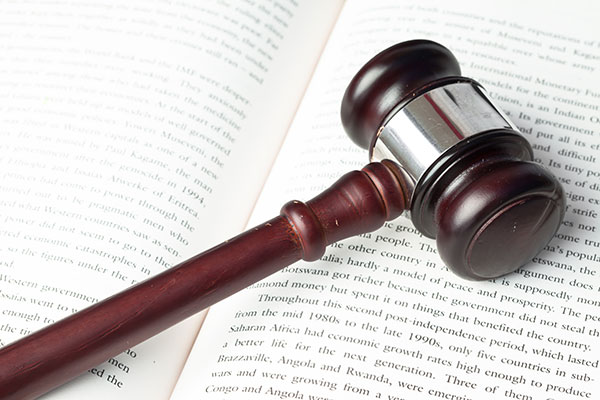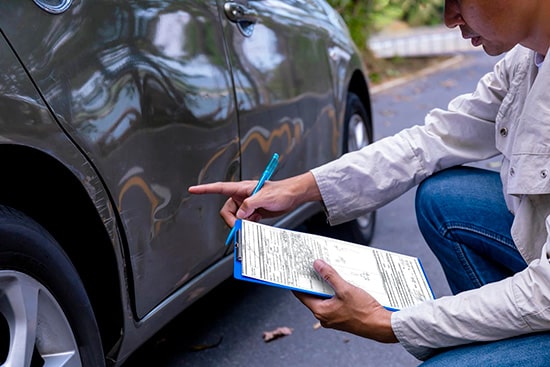3 Ways You Can Prove Fault in a Car Accident
Colorado accident attorney wants you to know how you can determine who was at fault in an auto accident
Our Denver car accident attorneys have extensive experience handling injury cases. It doesn’t matter if you have a minor scrape or a major collision, we are here for you.
Proving fault in a car accident boils down to figuring out who acted carelessly – or was negligent.
Sometimes, it’s clearly definable who was at fault – another driver, pedestrian or cyclist’s negligence caused the car accident to happen. Common sense will often tell you who is at fault even when you don’t know the specific driving laws in Colorado that the negligent person violated.
But the laws and rules around fault aren’t always clear. For instance, do you know who has the right of way in a parking lot? Do pedestrians have the right of way over cars at intersections? What happens if both drivers were speeding?
Understanding who is at fault in a car accident and finding “official” support for your case will make negotiating with your insurance company or claiming a personal injury much easier.
Negligence is defined as the failure to behave in a way that a responsible person would have in the same situation. Denver-based injury attorney Mack Babcock discusses Colorado negligence law.
Below are three general steps you can use to determine who is at fault in a car accident in Colorado and around the U.S.
1. “No-Doubt” Liability in Car Accidents
Some types of car accidents are pretty easy to conclude who is responsible, or at fault. Nearly 100% of the time, insurance companies will not argue who was at fault for the car accident.
Regardless of why you’re stopped, if you’re hit from behind, it’s extremely rare you would be at fault. One of the basic rules of driving is that you should always be able to stop safely if traffic is stopped ahead. It’s possible for a driver who struck you to have a claim against someone who made you stop abruptly, but they are still responsible for hitting you.
Location of the damage on the vehicles provides proof of a rear-end collision – if the back of one vehicle is damaged along with the front of the other, a rear-end collision occurred.
In a few instances, you can be held partially responsible for a rear-end collision, reducing your compensation. Having one or both rear-brake lights out at night or experiencing mechanical problems but failing to do all you can do to move the vehicle off the roadway are a couple examples of exceptions to this “no-doubt” liability rule in determining fault for a car accident.
II. Left-turn car accidents
In nearly every case involving a car going straight down the road and a car making a left turn, the car making the left turn is deemed at fault if an accident occurs.
The same concept as in rear-end collisions applies – where the damage is located is key to identifying a left-turn accident with your insurance company or in any Colorado personal injury claim. If there is damage on the front-end of one car and on the front-right side of the other, a left-turn accident has occurred.
Exceptions to the “no fault” provision of a left-turn car accident include when the car traveling straight was traveling way over the speed limit or ran a red light.
2. Police reports
Another way to prove fault in a car accident is by obtaining any police reports filed by the officers responding to the accident. If it’s obviously clear who was at fault, the officer may state his opinion that someone violated a specific traffic law, causing the car accident.
In fact, any mention in the police report of a traffic law violation or careless driving by another driver is good proof that they were at fault for the car accident.
3. State and local traffic laws
Research state and local laws to find additional support for any negotiation with your insurance company or personal injury claim.
You can access a basic outline of Colorado’s driving regulations here or visit your local department of motor vehicles office. Look for instances involving your car accident in the index – “speed limits”, “right of way”, “roadway markings” are just a few examples.
Most public libraries have copies of the actual driving statutes – or you can visit a law library to find driving statutes in your state. If you think a rule may apply to your car accident, write it down exactly as it appears along with the statute number.
There also may be local statutes that apply to your case. Visit the website for the city/county where the accident occurred to learn about any local ordinances that may have been violated by the other driver.
If you think the other driver is at fault, these three principles can help you prove your case. Colorado car crash attorneys at the Babcock Law Firm can assist you in any claim against an at-fault driver or your insurance carrier.
Continue reading these related articles for more information…
- 3 Elements of a Colorado Car Accident Claim
- 3 Reasons to Hire a Personal Injury Attorney
- Help Your Lawyer Help You
- Resolve Colorado Personal Injury Disputes Out of Court
Talk with Us Today – a Free, No-Risk Consultation
Discuss the details of your claim with a Colorado auto accident attorney at The Babcock Firm today. No matter where you are in the state of Colorado, if your case falls within our practice area and we feel our representation can benefit you, an attorney will conduct an in-depth consultation at no charge. We are here to help you secure a successful outcome.
Watch out for car accident scams
Car accident scams are on the rise in Denver, but knowledge is power. Protect yourself before or after an accident with these simple tips.
Disclaimer
While the Babcock Law Firm tirelessly works to obtain successful outcomes for its clients, prior positive outcomes are no guarantee of future success. Indicating prior positive results is in no way intended to guarantee future results.



